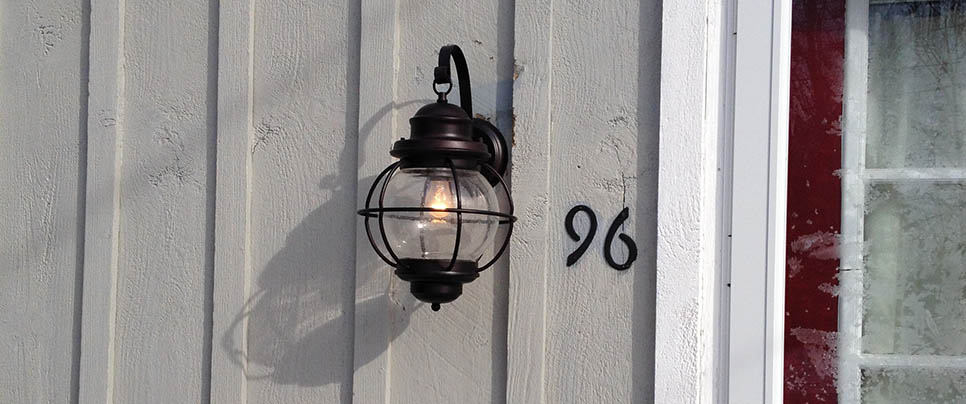Tighten a home that has moisture issues
Energy efficiency can be directly related to the warm air leaking out of your home. So most of us understand that air sealing and tightening our homes will make them more energy efficient. That is correct, but it is extremely important to eliminate moisture problems before we do so. Moisture trapped within the home creates condensation, structural damage, mold growth, and poor indoor air quality. Sources of moisture can be dirt basements and crawlspaces, un-sealed concrete slabs or walls, fish tanks, cooking with gas, cooking without lids on pots, shower areas, excessive amounts of plants, greenhouse open to the living space, standing water, bathroom or laundry vents not vented to the exterior, uncovered sump pumps and many other sources. The best course of action is to eliminate the moisture source before air sealing the home. If you can’t eliminate the source, encapsulate it. If you can’t encapsulate it, try to diffuse it.
Replace the windows first
Windows are very costly. Rarely do windows pay for themselves in energy retrofits before the lifespan of the window is considered over. Who wants to wait 25, 35, or 45 plus years for their windows to pay for themselves? The current energy standards only require you to put R- 3.3 windows in your home. That’s hardly better then the R-2 double hung window that you currently have. The most cost effective solution for window retrofits is air sealing the window during installation, not the actual window itself. So before you replace those leaky windows, see if you can remove the trim and air seal around the window. If you have a broken window, or a window with condensation between the panes of glass that would be an appropriate time to replace the window. Also, if you have a very old home with weight and chain windows, it might be in your best interest to replace the windows. The weight and chain cavity of a window allows significant air leakage into the home and cannot be effectively sealed without changing the operation of the window.
Not have a qualified energy professional evaluate your home
Many contractors will tell you that you don’t need to hire an energy professional to evaluate your home. However, energy professionals are trained in both evaluation and safety. A good energy auditor will not only evaluate your home but provide diagnostic testing to locate the worst performing sections to tackle those first. In addition, an energy auditor should be checking your home for air quality issues like back-drafting furnaces, poorly performing ventilation systems, leaky gas lines, and excess toxins and moisture. They should be able to provide you with a prioritized list of energy improvements, and come back to test the air quality and heating system safety after the work has been completed. Simply adding more insulation to your attic without addressing potential problems is a waste of your time and money.
Insulate your attic without air sealing first
As I mentioned above, adding extra insulation does not mean that you are adding energy improvements. Attic spaces tend to have several openings between the living space and the cold attic. That air movement from the living space into the attic increases heat loss in your home and also transfers warm moist air to the attic. That warm moist air will often condense on the roof sheathing and cause premature roof failure and mold growth. Insulation is not meant to retard airflow; it’s meant to reduce conductive heat flow through the ceiling material. So if your insulation isn’t in full contact with your sheetrock or plaster ceiling it is not an effective thermal barrier. This can happen due to strapping on a ceiling or insulation that fits poorly within a space. Air is constantly flowing between the surface of the ceiling and the surface of the insulation taking heat with it. The areas around penetrations in the ceiling are drawing air, because heat rises, up through those holes with little resistance. Fiberglass insulation becomes a filter for that air, but does not stop it. Cellulose insulation can reduce the flow, but also does not stop it. So the first course of action when adding insulation to your attic is to air seal around all penetrations [pluming, electrical, mechanical, chimney’s, open wall cavities, etc] prior to adding a layer of insulation. Then be sure that the type of insulation you install will fit fully against the ceiling surface below.
Forget the attic hatch
As little as a 7% void in insulation can cause up to 50% of the heat loss through your attic. Having an un-insulated attic hatch adjacent to your R-49 attic space can result in a significant amount of heat loss. Your heating system will work hard to continue to heat that hole in your ceiling. The attic hatch will be constantly giving heat to the attic and requiring heat to stay warm. Sometimes there is a fiberglass batt positioned on the top of the attic hatch, but the first time someone goes up through the hatch the batt is moved to the side and rarely replaced. Even if your attic hatch has insulation on it, the hatch is rarely air sealed allowing a significant amount of heat to enter the attic space around the board or sheetrock that acts as your attic hatch. So, even if you do have a fiberglass batt on top of your attic hatch, if it is not air sealed, that insulation is doing nothing.
Pretend the basement does not exist
Basements are an integral part of a building envelope, and although we like to pretend they do not exist they are some of the leading contributors to energy loss in a home. Concrete has virtually no R-value, so any section of above grade foundation that you have is continually leaking heat to the exterior of your home. You may notice that your flowers bloom early in the spring, and the snow melts directly against your foundation sooner then other areas. Basements also tend to be the place where we store our chemicals, firewood, paints, and install our heating systems. If you have poorly installed ductwork in your basement you can be transferring all of those indoor air pollutants directly to your living spaces. Any holes between the basement for plumbing, electrical, and mechanical directly introduce the moisture and toxins from your basement into the rest of your home. And insulating the basement ceiling isn’t going to stop that airflow, and often times can lead to frozen pipes and performance issues with your heating system. So before you say you want to do an energy project, but you don’t want to address your basement, remember that you could be creating a new issue that you did not have before.
Ignore the air barrier between the garage and living space
And last, but certainly not least, is ignoring the reasons why new construction codes require you to have a separation between your living space and your garage. For code purposes, several of the requirements relate to fire hazards. However, we have also learned in recent years, with the influx of tighter homes, that contaminants in the garage often leads to poor indoor air quality. Your car continues to give off carbon monoxide for hours after it is turned off. Similar to your basement, your garage is where you tend to store chemicals and gas for your lawn mower. For these reasons, it is very important that you have a continuous air barrier between your garage and living space. This includes attached garages and tuck under garages where the garage is below with a living space is above.Remember, your house is a system. Every part is directly or indirectly related to some other part. So hiring an energy professional to help you create a safe, comfortable, and energy efficient home isn’t just important, it’s critical.


